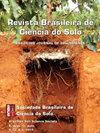基于土壤指标确定适当的参考生态系统以评价采矿后复垦:一个多变量框架
IF 2
4区 农林科学
Q3 SOIL SCIENCE
引用次数: 0
摘要
大型采矿作业,例如与铁开采有关的采矿作业,扰乱了土壤和植被,因此需要采取有效的恢复措施。巴西东南部的铁四边形地区是世界生物多样性的热点地区之一;然而,铁矿开采活动威胁到许多自然和半自然生态系统类型,其中有许多珍稀/受保护物种。铁四合院有四种主要的生态系统类型:大西洋森林(AF)、茂密植被的铁红色草原(FRG-D);稀疏植被的铁红色草原(FRG-S);石英岩红色草地(QRG)。为了支持恢复和监测计划,我们评估了参考区域,并确定了这四个生态系统之间最能区分的土壤和植被属性。我们测量了34种土壤物理、化学和生物特性以及两个植被参数,并使用多变量分析发现:1)特性之间的相关性;2)区域之间的差异。我们确定了12个最能区分区域的属性(按相关度从高到低排序):镍含量;可交换铝;粘土含量;地上植被量;铝饱和度;粒子密度;体积密度;砷的含量;锌的内容;铅含量、细砂加粉含量;和细砂含量。土壤理化性质对生态系统类型的差异更为敏感,特别是与肥力有关的参数以及金属和半金属的存在将AF与FRG-D和FRG-S区分开。土壤物理性质,包括细砂和粉砂含量,是区分QRG与其他生态系统的最重要因素,可能是由于石英岩物质暴露于侵蚀过程中。这项研究表明,确定采矿后复垦的适当参考区域十分重要。本文章由计算机程序翻译,如有差异,请以英文原文为准。
Identifying appropriate reference ecosystems based on soil indicators to evaluate postmining reclamation: A multivariate framework
Large-scale mining operations, such as those associated with iron extraction, disturb soils and vegetation and create the need for effective rehabilitation practices. The Iron Quadrangle region of southeastern Brazil is one of the world’s biodiversity hotspots; however, iron mining activities threaten many natural and seminatural ecosystem types in which many rare/protected species occur. The Iron Quadrangle has four main ecosystem types: Atlantic Forest (AF), ferruginous rupestrian grassland with dense vegetation (FRG-D); ferruginous rupestrian grassland with sparse vegetation (FRG-S); and quartzite rupestrian grassland (QRG). To support rehabilitation and monitoring plans, we evaluated reference areas and identified soil and vegetative attributes that best differentiated between these four ecosystems. We measured thirty-four physical, chemical, and biological soil properties and two vegetation parameters and, using a multivariate analysis, detected: 1) correlations between properties and 2) differences between areas. We identified twelve properties that best differentiated the areas (in order from most to least relevant): nickel content; exchangeable aluminum; clay content; above-ground vegetation volume; aluminum saturation; particle density; bulk density; arsenic content; zinc content; lead content, fine sand plus silt content; and fine sand content. Soil physicochemical properties proved to be more sensitive to differences in ecosystem type, and in particular, parameters related to fertility and the presence of metals and semi-metals differentiated the AF from the FRG-D and FRG-S. Soil physical properties, including fine sand and silt content, were most important for differentiating QRG from the other ecosystems, possibly resulting from the exposure of quartzite material to erosive processes. This study demonstrates the importance of identifying appropriate reference areas for post-mining reclamation.
求助全文
通过发布文献求助,成功后即可免费获取论文全文。
去求助
来源期刊

Revista Brasileira De Ciencia Do Solo
农林科学-土壤科学
CiteScore
3.00
自引率
11.80%
发文量
32
审稿时长
9-24 weeks
期刊介绍:
The Revista Brasileira de Ciência do Solo is a scientific journal published by the Brazilian Society for Soil Science (SBCS), founded in 1947, and is responsible for the propagation of original and inedited technical-scientific work of interest for Soil Science.
Contributions must not have been previously published or submit to other periodicals, with the only exception of articles presented in summarized form at professional meetings. Literature reviews are accepted when solicited by the Editorial Board.
 求助内容:
求助内容: 应助结果提醒方式:
应助结果提醒方式:


